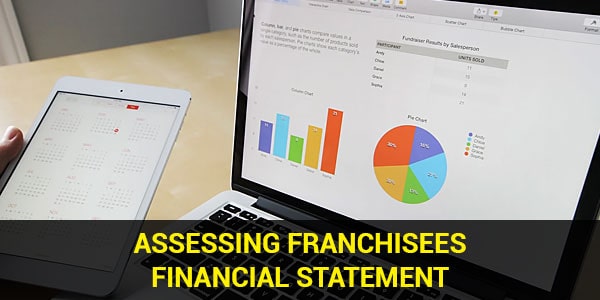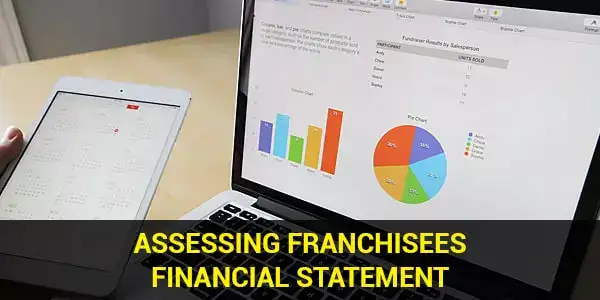
One of the interesting things when taking a business through the franchise system is because of the assistance (supports) provided by the Franchisor. One of the supports provided by the Franchisor is what is commonly called Monitoring and Control. In monitoring (and controlling) the Franchisee business, there are several things that are usually done by the Franchisor, namely visiting the Franchisee location, and providing input from the results of the Franchisee’s Financial Reports.
The visits made by the Franchisor to the Franchisee location also vary, some are official and some are secretly (for example by sending mystery guests). The purpose of this visit is to find out the behavior and work procedures of Franchisee employees in handling daily activities, whether it is in accordance with what was trained or taught. Especially for official visits, evaluation and improvement of work methods can be immediately given and / or retrained to Franchisee employees.
Also read: Calculate The Selling Price to Get Big Profits
This monitoring and control activity is often referred to as an audit franchise. Just keep in mind, in monitoring and control activities, the objective of the job is that the work method becomes correct (according to training) after the wrong work method is found, not like the audit objective in general, which is to find evidence that the work method did not make a mistake or there was an error.

Regarding the input given by the Franchisor from the results of the analysis of the Franchisee’s financial statements, is input on the analysis of past performance results of the Franchisee. As we all know, the financial statements show what the Franchisee (Franchisee management) has done in the reporting period (and previous performance). Or in other words, financial reports provide information regarding the financial position and changes and performance that has been done.
Although financial reports do not provide all the information that may be needed by the Franchisor (and also the Franchisee) to make decisions (economic decisions), it will be able to direct work assignments for Franchisor staff in monitoring and control for matters of primary concern.
For example, in the Franchisee’s financial statements there is an unnatural increase in the depreciation percentage value (on the income statement), so regardless of the cash shift from the balance sheet analysis for two consecutive periods, a temporary conclusion will arise that there has been a purchase of new assets at Franchisee outlets.
Thus, when the visit (monitoring and control) is carried out, the staff of the Franchisor can immediately review the condition at the Franchisee’s outlet, whether there are new asset purchases. If it is true that there is a purchase of new assets, is it because the old assets have been damaged or other things that are not related to the business being carried out. If it is due to damaged old assets, it can be traced whether the damage is due to failure of operational assets, or maintenance errors, or asset life, and so on.
Another example, if there is a decrease in the percentage of the Gross Margin value (Gross Profit), then a temporary conclusion can lead to an increase in COGS (Cost of Purchase) at the Franchisee outlet. This HPP increase can direct the Franchisor to investigate whether there has been an increase in prices for the purchase of raw materials at the Franchisee’s location, or there has been a processing error of basic materials, or an increase / stockpiling of basic ingredients.
If further analysis leads to errors in processing of basic materials, several new estimates can be determined, such as damage to basic materials, or theft of basic materials, or repetition of processing of basic materials due to human error, and so on. If the visit is carried out and the results show the damage to the basic ingredients, then the analysis will continue to the inability of the basic material storage device or human error, and so on, so that the Franchisor can advise the Franchisee to take the right action.
Company financial reports are records of financial information for a certain accounting period, which are used to read the performance of the company. To be able to read the company’s performance, the minimum financial statements include the income statement for a certain period, and the company’s balance sheet from the same period in the form of two consecutive periods (the same period as the profit and loss statement and the previous period).
For Indonesia, the way of making financial statements follows the rules, namely following the Financial Accounting Standards set by the IAI (Indonesian Accountants Association), which also refers to IFRS (International Financial Reporting Standards).
For the Franchisor, while still not violating the predetermined rules of standardization of financial statements, they can still personify the form of the report for the sake of Franchisor analysis. Of course, in the form of software that is “loaned” and trained how to use it to the Franchisees.
For example, damage to raw materials will be calculated in Cost of Goods Purchased (HPP). But to be able to analyze the stability of the cost of goods purchased and trace the damage to raw materials, the reporting method is separated. HPP reporting does not include damaged and or lost goods in raw materials, but damage / loss of raw materials is reported (recorded) in certain accounts / posts. So that when the financial statements are printed, it will show how much raw material (or stock) is damaged / missing. For this reason, suggestions for improvements can be made, whether training in maintenance and storage, or replacement of storage units, or prevention of theft, and so on.
Also read: How to Calculate COGS and Selling Price
From all of the above, the most important thing is that the Franchisor (or his staff) can understand how to read financial reports, and really mastery in the business that is marketed by franchising. Mastery in business is also one of the reasons for the design of a financial statement form. Another thing, of course, the software for making financial reporting is made uncomplicated and easy to teach.
Source: majalahfranchise.com






